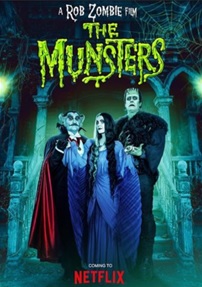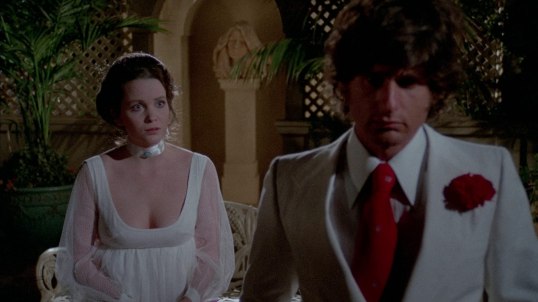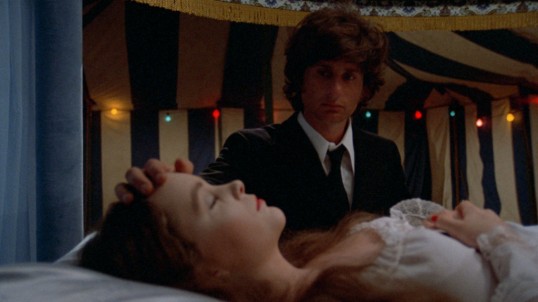 Have you ever wondered how Herman and Lily Munster came to live at 1313 Mockingbird Lane?
Have you ever wondered how Herman and Lily Munster came to live at 1313 Mockingbird Lane?
No?
That’s too bad, because Rob Zombie is going to tell you anyways.
Rob Zombie’s The Munsters is a prequel to the 60s sitcom of the same name. It shows how Herman Munster (Jeff Daniel Phillips) came to be created, how he became a Rob Zombie-style rock star, and how he overcame the opposition of the Count (Daniel Roebuck) and married Lily (Sheri Moon Zombie). It also shows how Lily’s brother, Lester (Tomas Boykin), tricked Herman into signing over the deed for the Count’s castle in Transylvania. There’s not much of a plot but there was never much of a plot when it came to the original sitcom either. Just like the show that the movie is based on, The Munsters exists to show classic monsters making corny jokes and freaking out at the prospect of dealing with what the rest of the world considers to be normalcy. Unlike the multi-faceted Addams Family, The Munsters have always been a one-joke family.
There have always been elements of satire and subversive humor in everything that Rob Zombie has done, as both a musician and a director. Those who claim that Rob Zombie does not have a sense of humor are mistaken. However, the comedy in The Munsters is deliberately broad and vaudevillian, like the show on which the movie is based. As a director, Zombie doesn’t always seem to know how to best present that type of humor. The Munsters is the rare movie that would have benefitted from a laugh track because the jokes are definitely sitcom-level. They were designed to be followed by canned laughter. Zombie’s affection for the material and the characters come through and the deliberately artificial production and costume design actually works better than I was expecting but, at nearly two hours, The Munsters often feels directionless.
Jeff Daniel Phillips and Daniel Roebuck do adequate imitations of Fred Gwynne and Al Lewis, respectively, but its Sheri Moon Zombie who steals the show, bringing a lot of mischievous energy to Lily. Of the principle cast, Sheri Moon Zombie is the only one makes her character feel like something more than just a tribute to an old sitcom. The camera loves her and she convinces us that she loves Herman, no matter how childishly he behaves.
One final note: Sylvester McCoy — the seventh doctor, himself! — plays the Count’s assistant, Igor. McCoy doesn’t get to do much but it was still good to see him. Igor was the type of role that Tom Baker used to specialize in before he was cast as the Fourth Doctor. By casting McCoy as Igor, it almost felt as if Zombie was keeping the role in the family.

